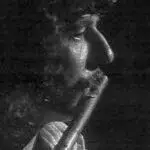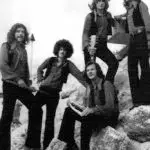Roberto Fracassini
Roberto Fracassini
Roberto Fracassini of Florence, Italy, began to play music around the age of six years old. He became an accomplished piano, flute, and alto, tenor and soprano saxophone player. Fracassini began playing music by ear on the piano, playing off and on with high school bands. At the insistence of his father, Fracassini finished his education in textile design but never worked in the field. He returned to school where he studied classical music at the Florence Conservatory of Music. There he completed what was normally a five-year program in less than three years. Fracassini soon joined nightclub bands in the hopes of traveling.
During Fracassini’s early career in music, jazz was rising to popularity in Europe, known there as “Dixieland” and featuring music by artists such as Keith Dougherty, Louie Armstrong and Hot Five. Fracassini joined a jazz club in Florence where he was introduced to the music of Charlie Parker which began to develop his love for modern jazz.
Fracassini eventually won a six-month contract to play in Tokyo, Japan where he played for seven years. In 1972 Fracassini and his rock band were hired at the newly opened Okura Hotel on Guam. At first the band’s loud rock style did not mesh with the Okura’s calm atmosphere and clientele. Fracassini switched to ballads, bossa novas and other mellow styles of music with his flute, impressing guests who were not accustomed to seeing a man play the instrument.
Fracassini returned to Japan after the Okura contract ended. During the mid ‘70s, a slump in the Japanese economy forced many nightclubs out of business. Fracassini returned to Guam when he and his band were hired by the Reef Hotel in 1976 following Typhoon Pamela. He played at the Top of the Reef at for several years. A change in music styles during the time toward the disco genre led Fracassini to seek a change in work. He began doing promotions for the hotel, producing music and bringing in bands from 1982 to 1983.
Many of Guam’s most celebrated musicians have embraced and admired Fracassini. He continues today to work with many fine artists on the island.
Editor’s note: The photos and initial research for this entry is courtesy of Mico and Stevie Scott’s Jazz on Guam: An Oral History, a project funded by the Guam Humanities Council and in part by the National Endowment for the Humanities.


